This is a project to modify a surplus Motorola STF2520A 800 MHz cellular-band RF amplifier for use in the 900 MHz amateur radio band. Note that this is a "low power" cellular amplifier, but it has a RF output of around 150 watts with only a few watts of drive.
The Motorola STF2520A's +24 volts at 15 amps DC power requirements are non-standard for ham gear, and this may be difficult to supply. Two decent-sized, 12 volt lead-acid batteries wired in series will work fine if you don't have a proper power supply. You can keep the batteries topped off with a trickle charger. Note that this amplifier has a maximum voltage rating of +28 VDC, and it's best to run it at only +24 VDC.
The stock Motorola STF2520A amplifier doesn't really require any board-level changes to operate in the 900 MHz region, but it does help (in some cases) to remove the output RF isolator, and you'll also need to add some new RF connectors for the RF input and output.
An optional "ground for transmit" bias control circuit will be added to this amplifier. This is handy if your application needs to power down the amplifier during a receive cycle. By default, the amplifier is always biased on. This +15 VDC bias voltage is provided via the YELLOW wire inside the amplifier.
The stock Motorola STF2520A 800 MHz cellular-band amplifier requires 2 - 5 watts of RF drive power for 150 watts output. The amplifier is biased for class AB, so it is slightly linear. Back off the RF input power to prevent any more distortion. Since this amplifier was designed for 100% duty cycle operation, it has a very rugged physical construction. You'll just want to make sure the fins of the heatsink are vertical to help with the heat dissipation to prevent overheating.

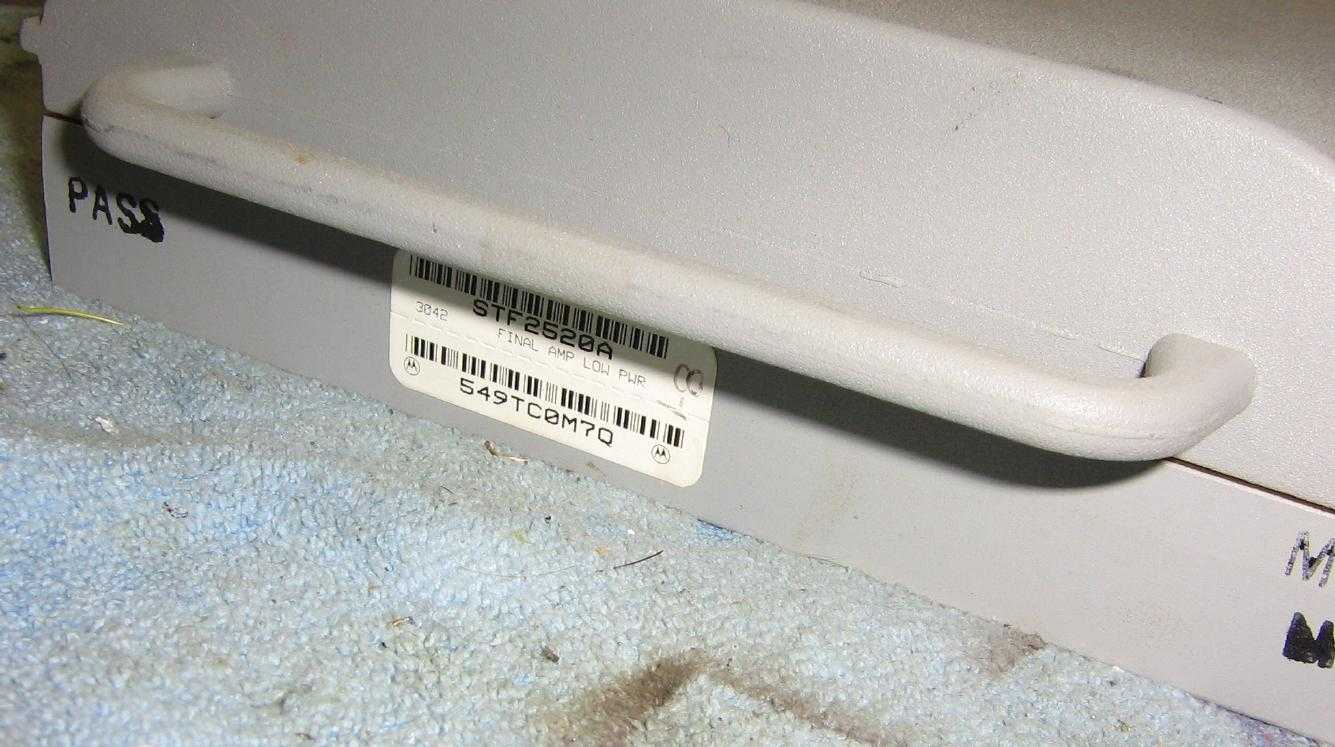
Overview of the label on a stock Motorola STF2520A 800 MHz cellular-band amplifier.
You can find these amplifiers on eBay or at ham radio swapfests at very low prices.
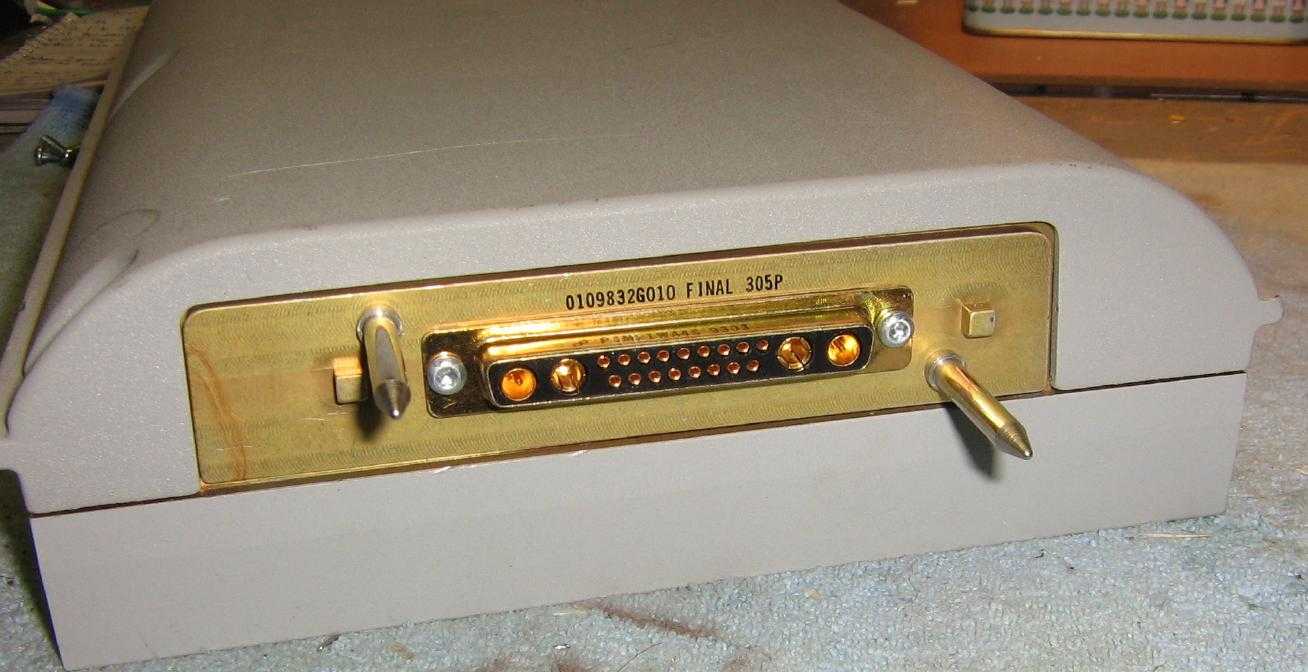
Overview of the main connector on a stock Motorola STF2520A 800 MHz cellular-band amplifier.
This connector provides both the RF input and output and the DC power for the amplifier.
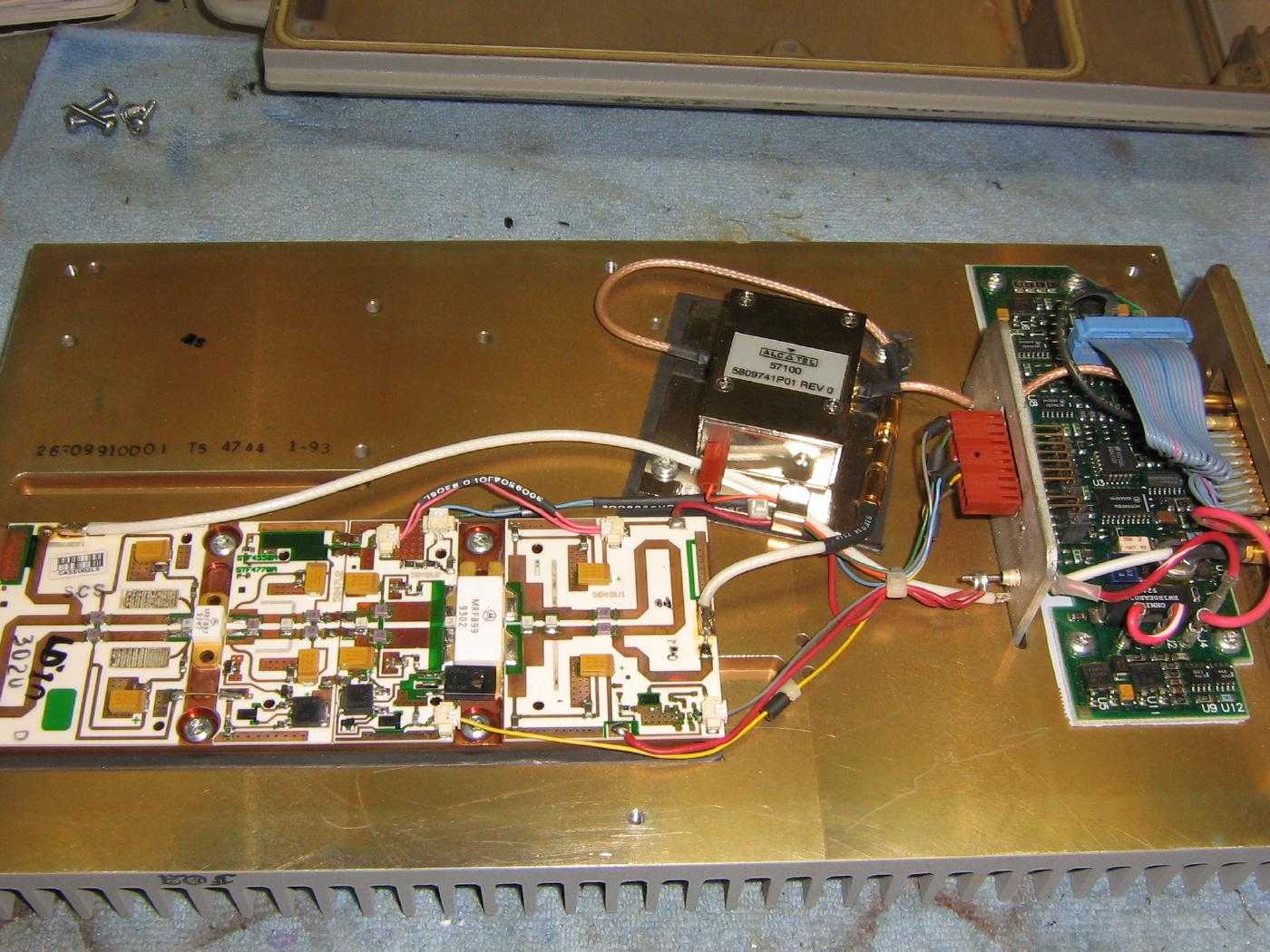
Internal view of a stock Motorola STF2520A 800 MHz cellular-band amplifier.
The low-power version of this amplifier is quite minimal in components.
The RF isolator is the silver box in the upper-middle.
RF input is on the left side of the circuit board, RF output on the right, going through the isolator.
The power supply circuit board is on the far-right.

RF input section of the Motorola STF2520A 800 MHz cellular-band amplifier.
The input RF transistor is a Motorola MRF897. At 900 MHz, it provides around 12 dB of gain and will give around 30 watts RF output with around 2 watts input.
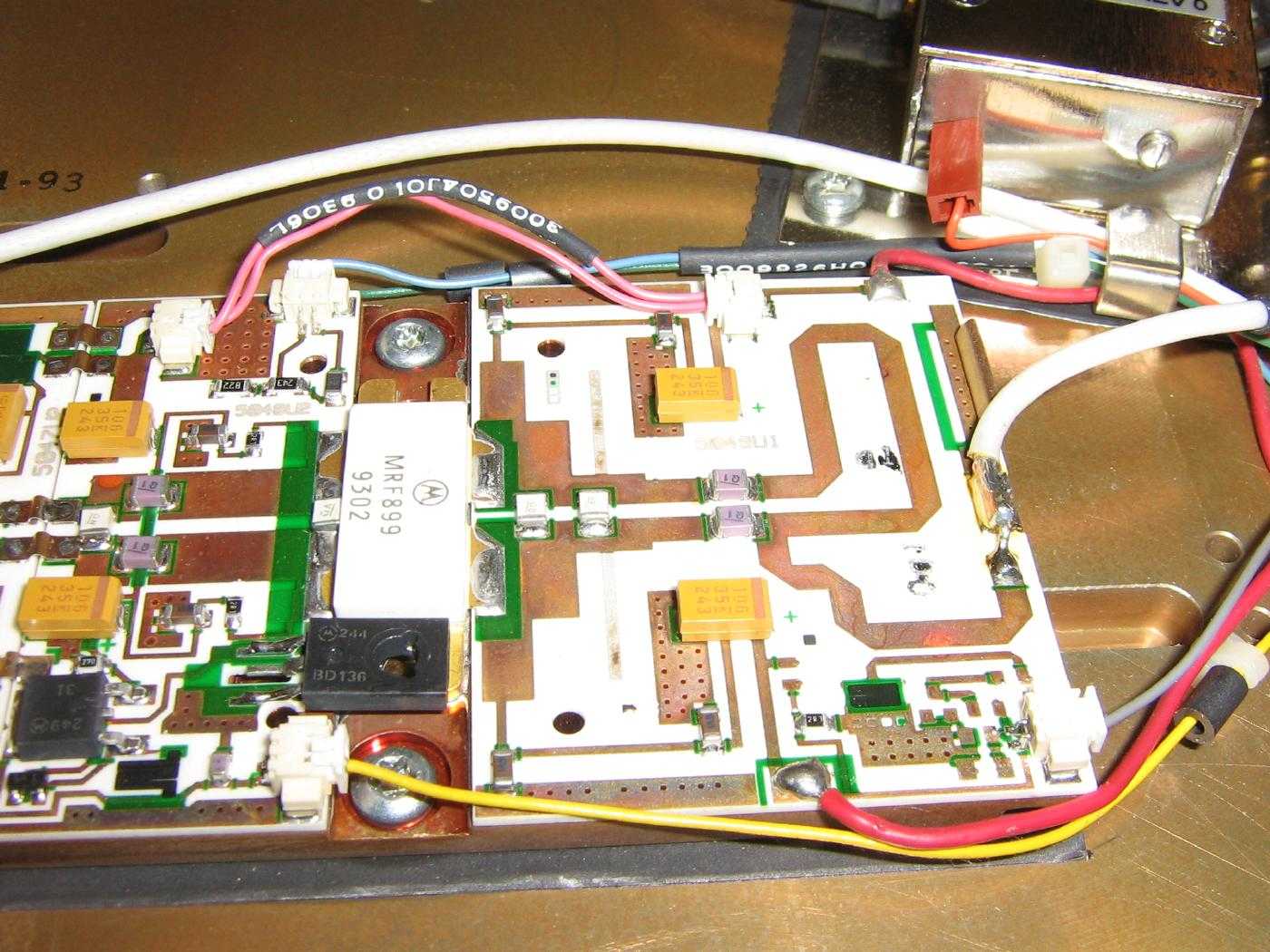
RF output section of the Motorola STF2520A 800 MHz cellular-band amplifier.
The output RF transistor is a Motorola MRF899. At 900 MHz, it provides around 9 dB of gain and will give around 150 watts RF output with around 20 watts input.

Overview of the output RF isolator and DC power control circuit board of the Motorola STF2520A 800 MHz cellular-band amplifier.
The stock RF isolator has a fairly poor response in the higher portion of the 900 MHz band, so it should be removed. Adding an external RF isolator is highly recommened.
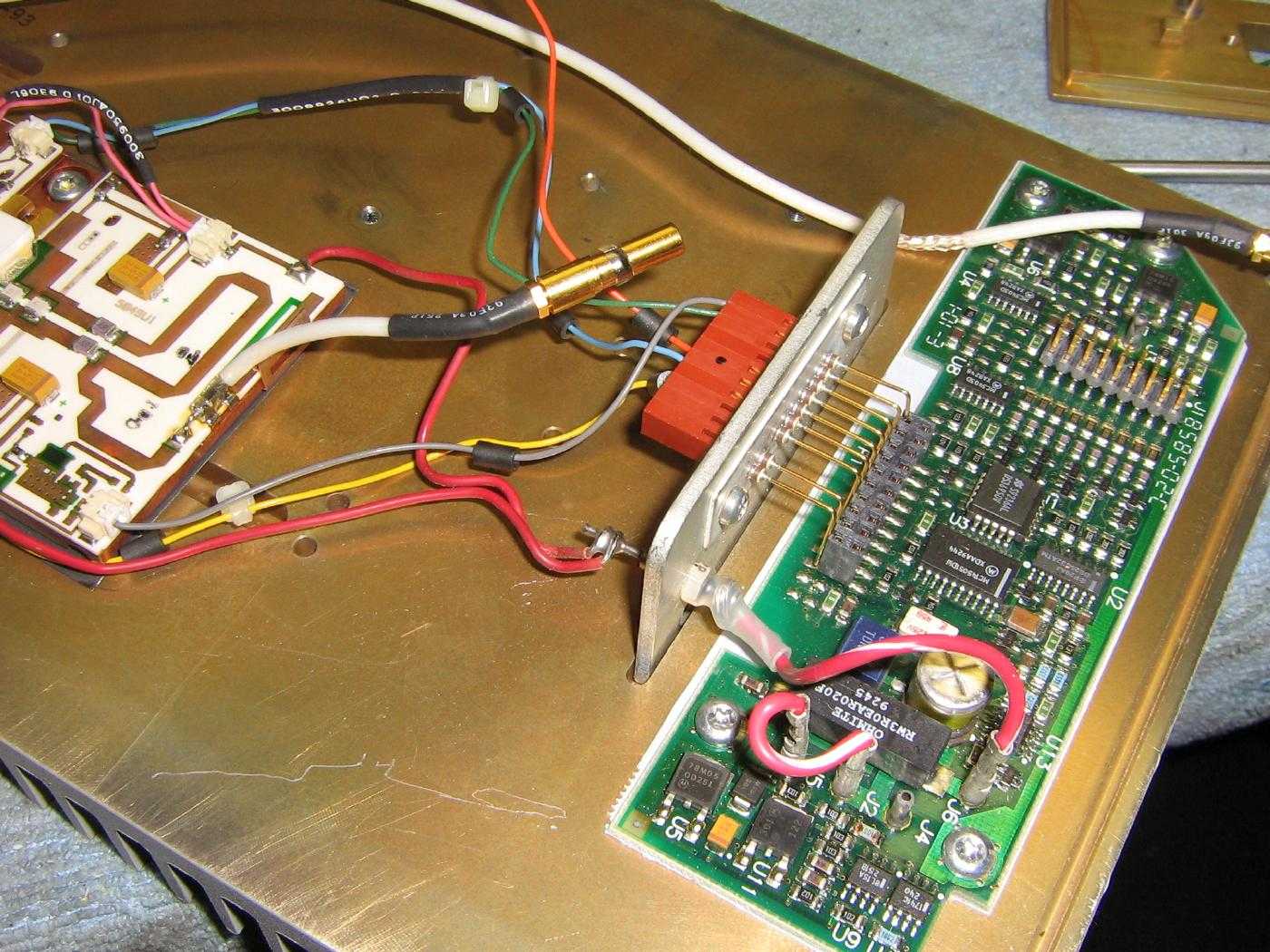
Removing the RF isolator.
You'll need to add longer coaxial cables on the RF input and output.
Only the RED wires and YELLOW wire going to the amplifier are required.
The RED wires carry the +24 VDC and the YELLOW wire is the +15 VDC bias control. By controlling the application of the bias voltage you can power down the amplifier, if so required.
You can trim the other wires (gray, blue, green, & orange), saving the ferrite beads for other uses.
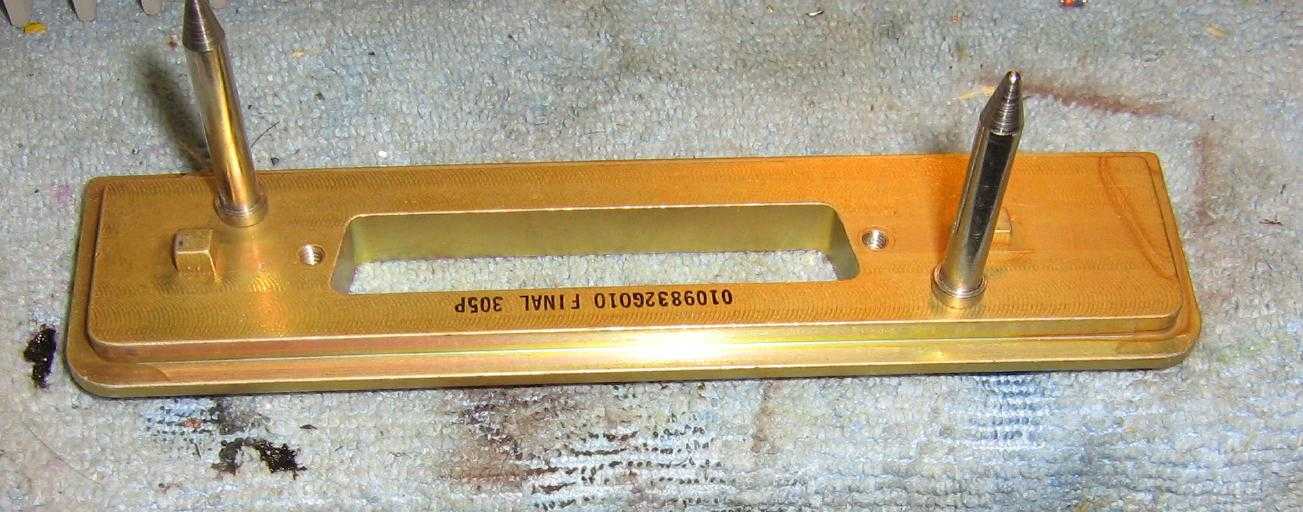
Removing the connector faceplate.
The faceplate will be slightly modified by adding new RF input and output jacks and banana jacks for DC power.
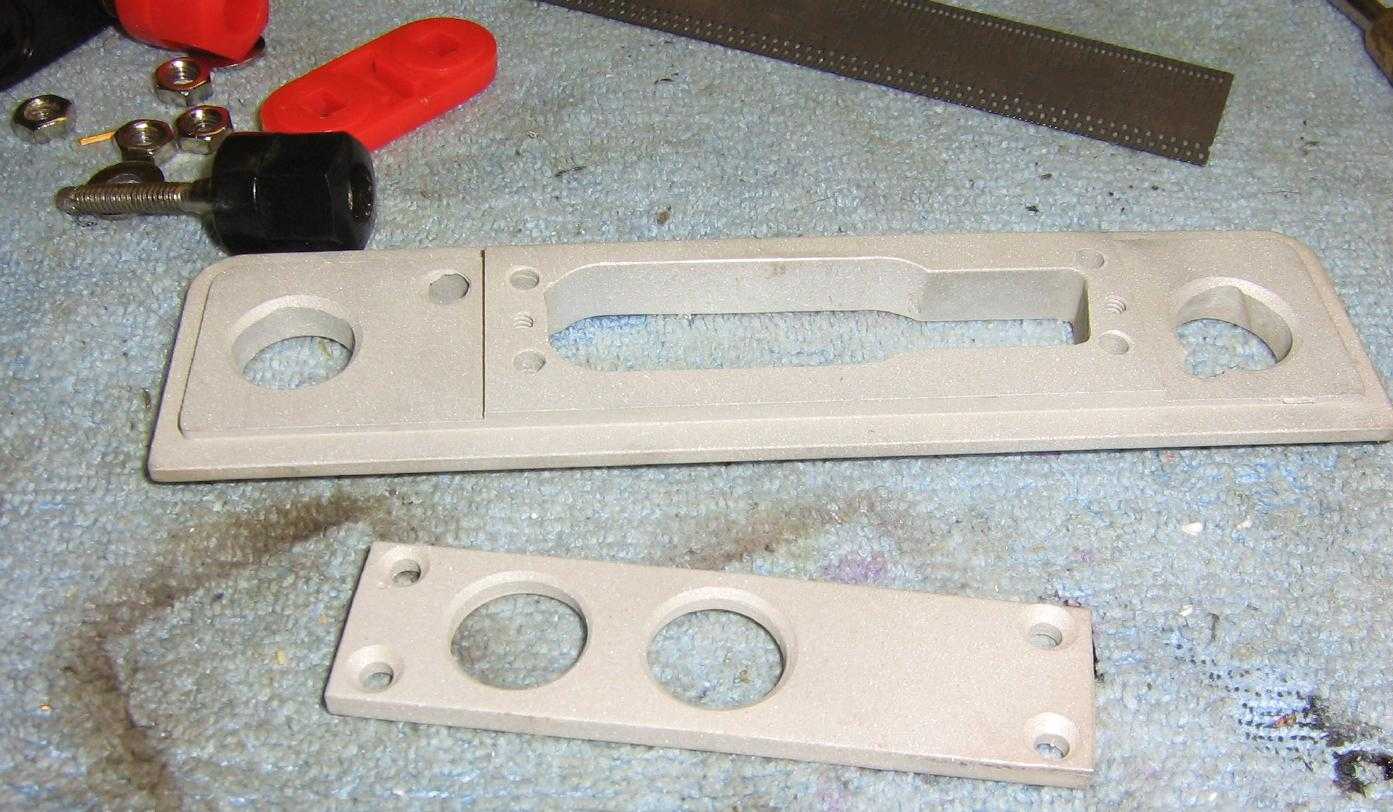
Cleaning up the faceplate.
The ends where machined down a bit and two 1/2-inch holes where drilled for adding panel-mount TNC connectors.
A small aluminum plate was made to fit over the original faceplate connector hole. This little plate will hold the banana jacks for DC power.

Constructing the new faceplate.
Panel-mount TNC connectors are used for the RF input and output.
An optional 1,000 pF feed-thru capacitor is used for the "ground for transmit" line.
The banana jacks are for the +24 VDC power.

Installing the new faceplate connector.
The RED wire on the stock DC power control circuit board connects to the RED (positive) banana jack. The BLACK wire connects to the BLACK (negative) banana jack.
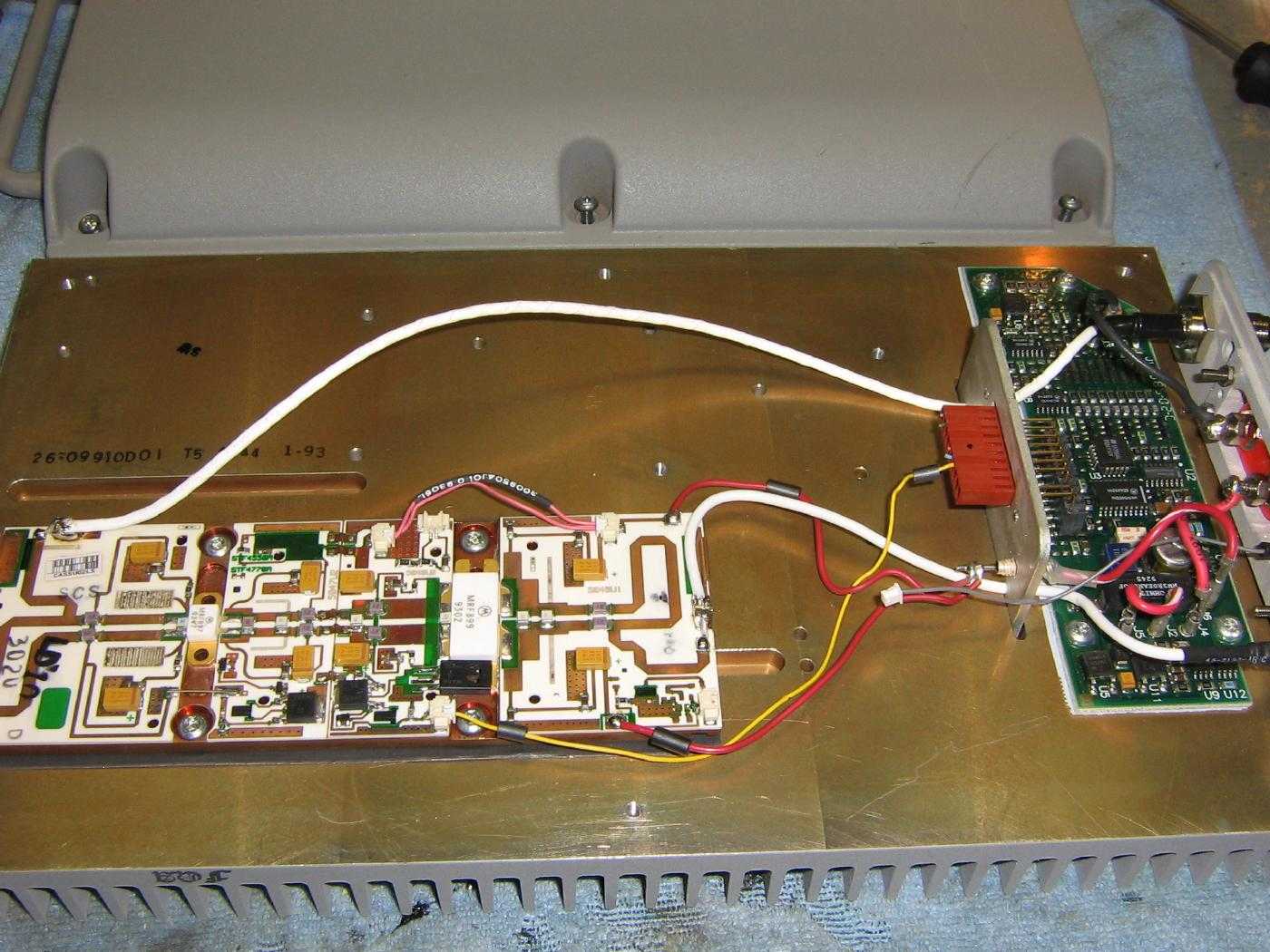
Overview of the completed Motorola STF2520A amplifier with the RF isolator and unnecessary wiring removed.
New pieces of 50 ohm Teflon coax were added for the RF input and output.
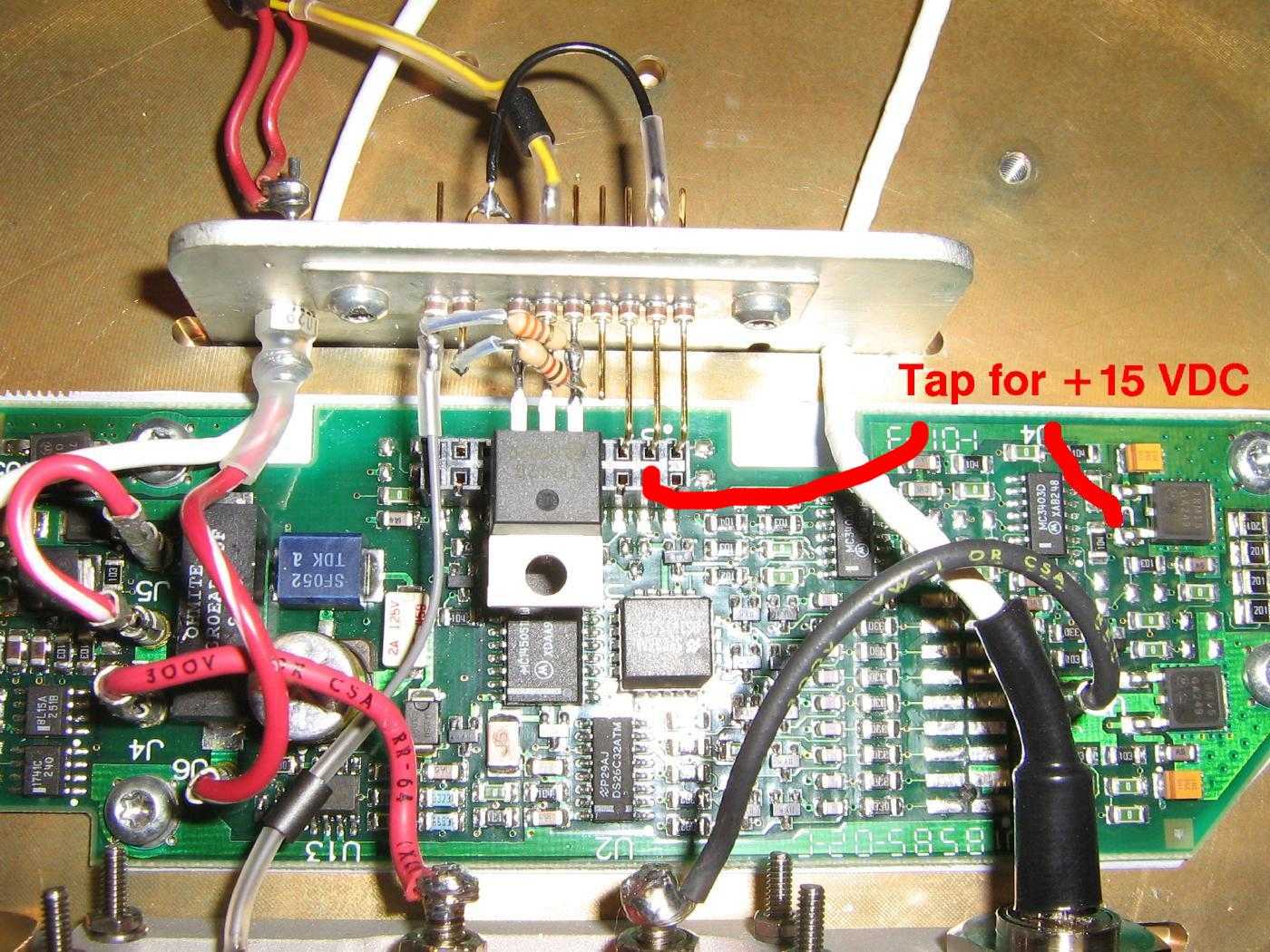
Optional bias control circuit.
Since those wires on the bulkhead connector are not required, I cut a few of the pins down and soldered the TIP42 transistor directly to them.
The other pins hold the biasing resistors and a tap for the required +15 VDC.
You can take the +15 VDC output directly from one of the 7815 voltage regulators (on the lower-right), or from the "second from the right" pin on the bulkhead.
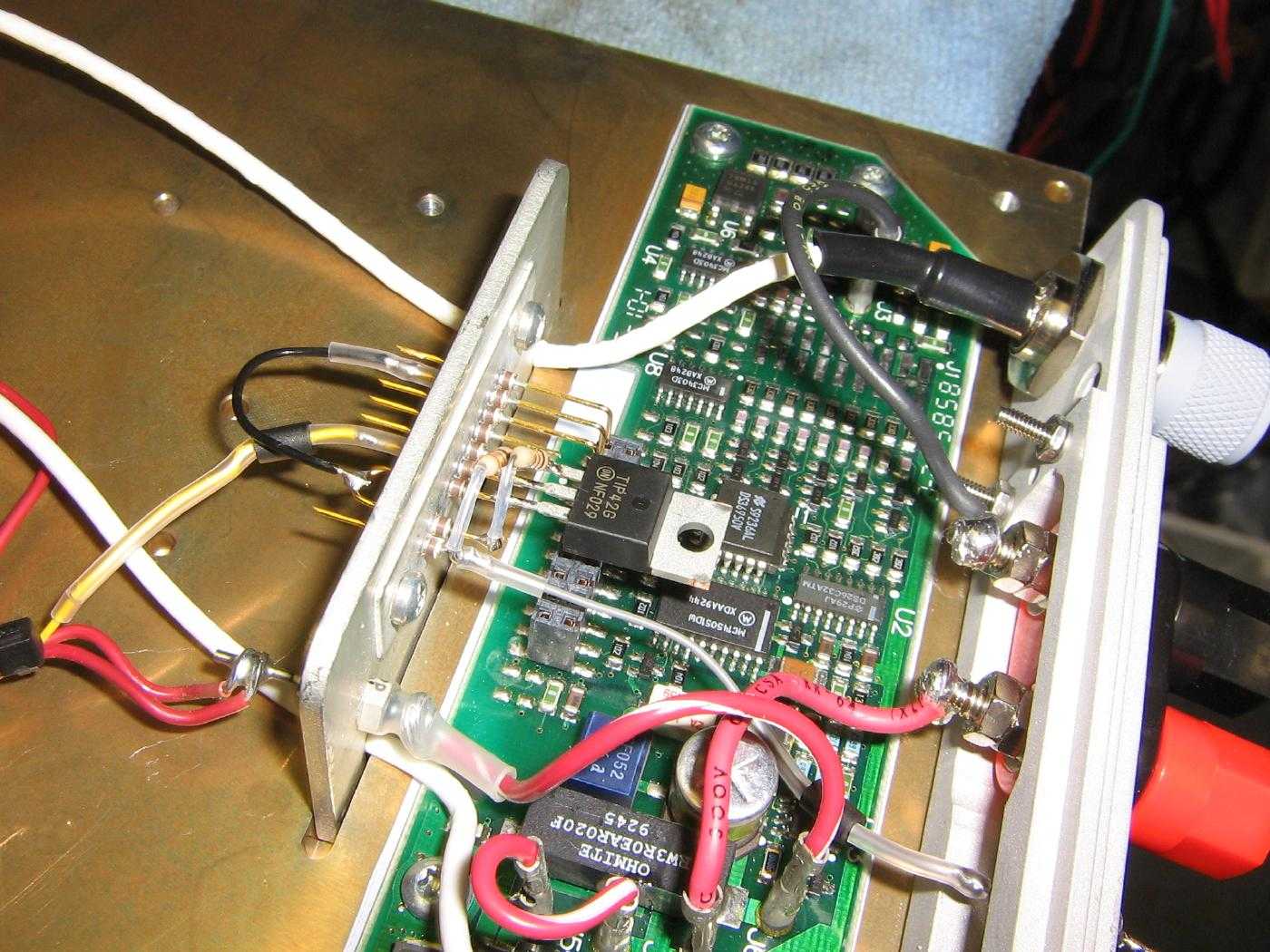
Overview of the completed bias control circuit.














